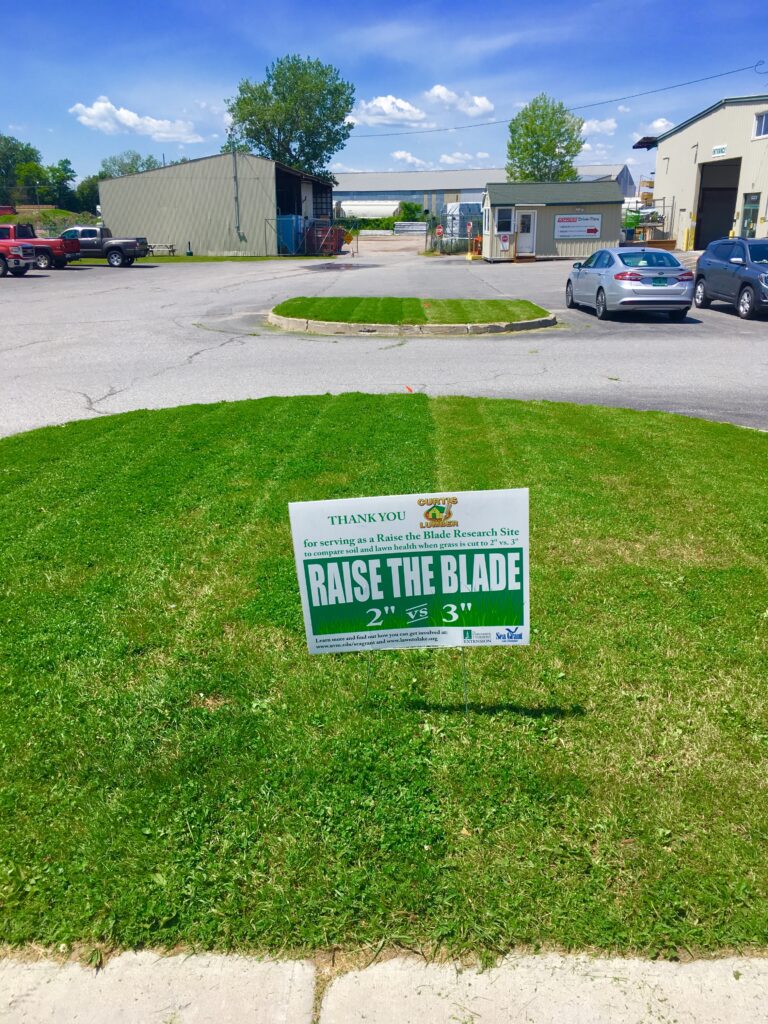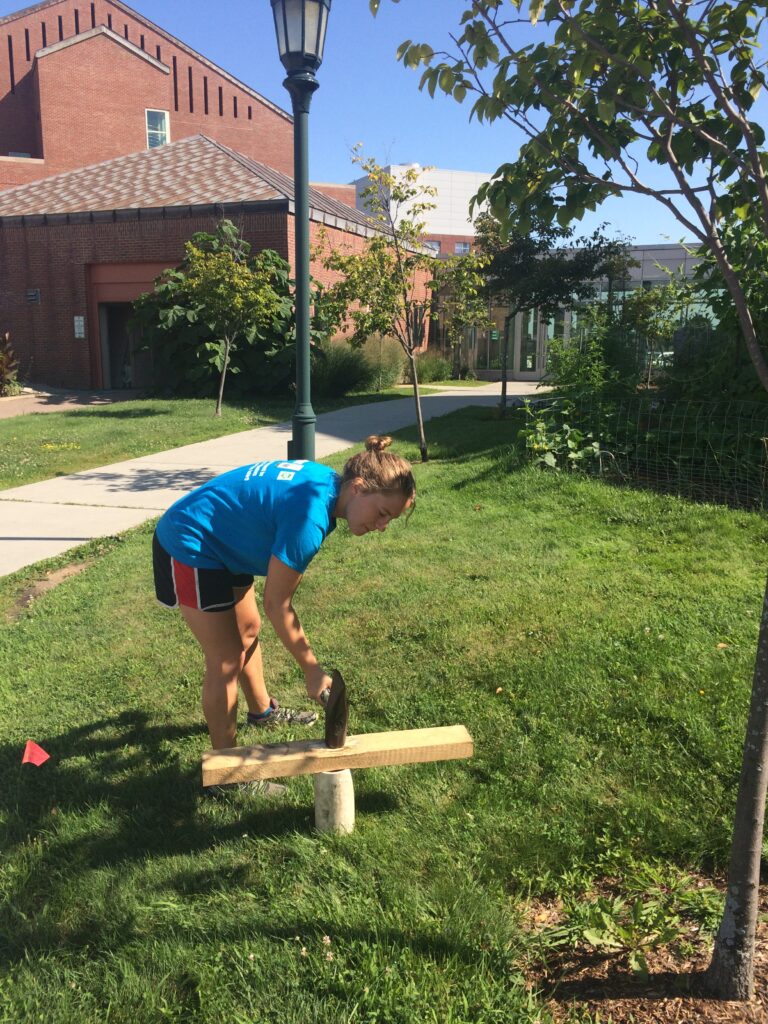
Moving down the road from Mo for the moment, as part of the Raise the Blade project, in 2017, we partnered with 10 Burlington area businesses to establish research plots where undergraduate interns would manage two grass plots at each business by mowing them to 3″ and 2″ in height, respectively.
We know from our basin-wide survey that, on average, 53% of Lake Champlain Basin homeowners maintain their grass to 2-3” in height. This group is motivated to potentially cut their grass to 3″ in length instead of shorter for reasons most often related to grass health and health of the environment, so we set out to use demonstration research sites at local businesses to see if cutting grass to 3″ would result in measurable differences in grass health over time as compared to cutting grass to 2″. (Peer-reviewed literature suggests it is, but research was generally conducted under different conditions than here in the Lake Champlain basin.)
The students would take a variety of measurements to assess grass and soil health over time. This was set up as a long-term (~10 year) experiment, as we hypothesized that changes in grass and soil health would be slow to develop, if any changes occurred at all.

In addition to collecting annual soil samples that are analyzed at the lab, weekly each summer and fall, the student researchers collect information such as percent grass cover, percent clover cover, and percent bare ground within a 1-meter square quadrat.

They also measure how long it takes for water to infiltrate into the ground and assess soil compaction.
In 2019, we ran analyses on a variety of parameters the students assess after collecting two years of data. We found no statistical differences between the 3″ and the 2″ research plots (as expected). However, as can be seen in the photo at business partner, Curtis Lumber, at the top of the page, visually, the grass cut to 3″ sometimes appears to be slightly more drought resistant than the grass cut to 2″.

Back in our yard, when the neighbor’s landscaping company mows, they sometimes cut the grass very short along the boundary line between our yards. Initially, the difference between where Mo mows (on the right) and where the landscaping company mows is striking.
Our lawn is also stressed, but is not nearly as burnt as our neighbor’s. To be fully transparent about the site, our rain gutter empties near the front of the photo at the right–by the milkweeds. As such, that grass has an added source of water and is clearly more green than elsewhere. However, while the lawn towards the back of the photo is less green and obviously stressed, the grass is visibly more stressed in our neighbor’s yard than in our own. So, while the jury is still out on whether there are measurable differences between grass and soil health when grass is managed to 2″ vs. 3″, generally-speaking, grass cut very short is visibly less tolerant to drought and high temperatures than grass cut to 3″.